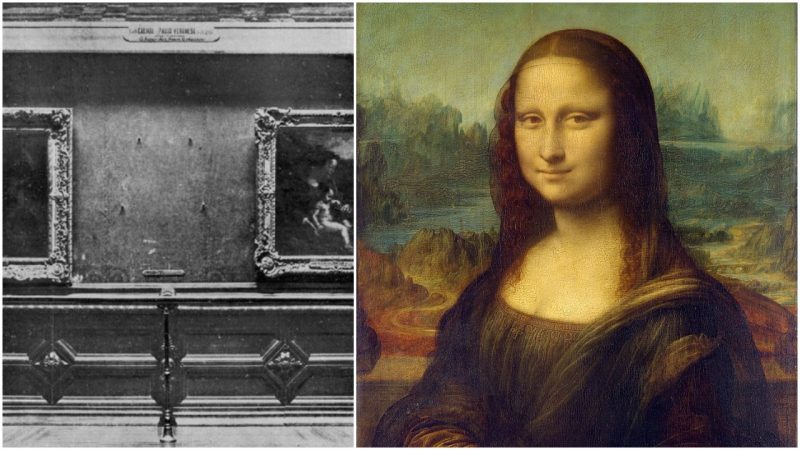Imagine you were visiting the famous Louvre Museum in Paris in late 1911. As you wandered through its rooms, containing some of the world’s greatest masterpieces, you might have been surprised to find that one of the gallery’s most popular attractions was not a painting, but empty space on the wall.
This was where the Mona Lisa had once hung. After the theft of the painting in August 1911 and the public outcry that followed it, crowds began to flock to the Louvre to stand and stare at the empty space on the wall.
Although it was one of the most famous art thefts in history, it was not carried out by a great criminal mastermind. The culprit was an Italian handyman and petty criminal named Vincenzo Peruggia.
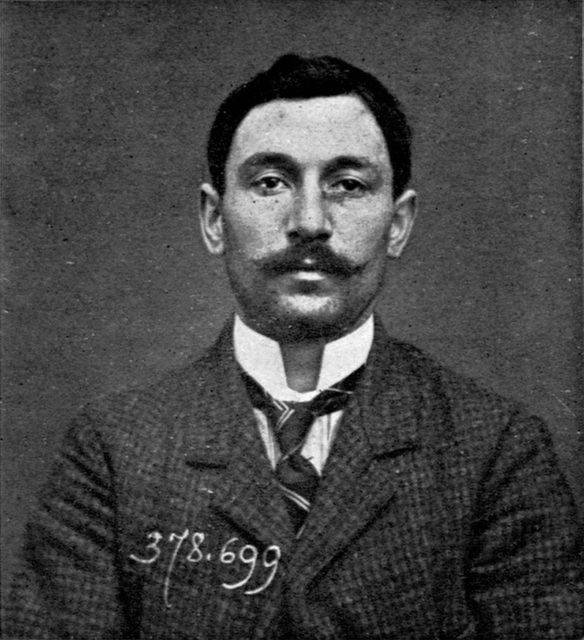
Peruggia had been working in the Louvre inserting glass into picture frames. On the night of August 20th, Peruggia and two accomplices hid overnight in a closet in the museum. In the morning, before the gallery opened, they slipped out with the painting weighing around 200 lbs, including the frame and glass, hidden under a blanket.
One of the most remarkable things was that the theft was not noticed until the following day. And even then, it was a member of the public rather than staff who raised alarm. One of the regulars at the Louvre was an artist who liked to paint in the gallery under the gaze of the Mona Lisa.
He noticed the four empty hooks on the wall. At first, it was assumed that the painting had been removed for photographing as the museum was in the process of cataloging all its paintings. But after checking with the photographer, it became clear that the Mona Lisa had been stolen.
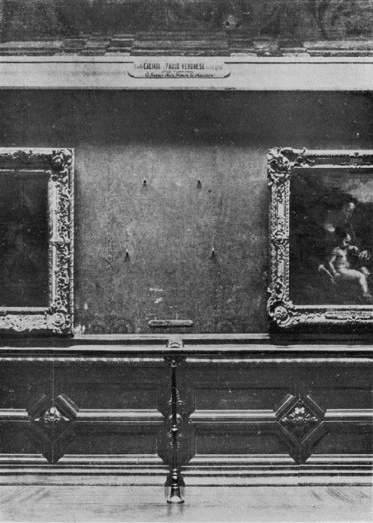
When the story broke it caused a public outcry and catapulted the painting into the public eye. Until that point, the Mona Lisa was not a particularly well-known painting. But it was considered a public embarrassment that the museum could lose a painting by the great Leonardo Da Vinci. The publicity also meant that it would be almost impossible to sell the painting. So, the Mona Lisa spent the next two years hidden in the false bottom of Peruggia’s trunk at his boarding house in Paris.
Related Video: Exhibition of Fascinating Leonardo Da Vinci Designs at Science Museum
https://youtu.be/dtCairKbsL8
The police had little to go on although they considered various lines of inquiry. One possibility was that the painting had been stolen to order for some rich American. The name of J.P. Morgan, the financial tycoon was mentioned in connection with the theft.
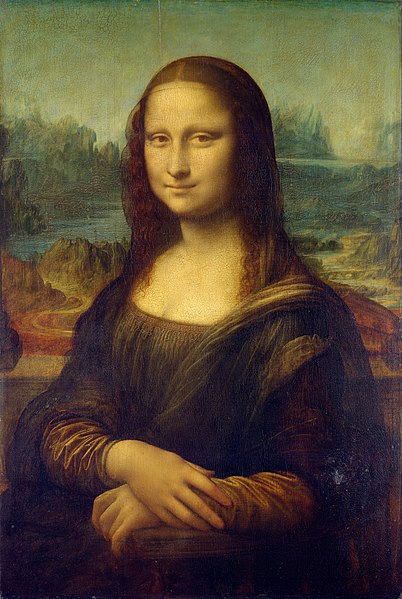
Another theory was that the Germans had stolen it. Tension had been building between the two countries in the years leading up to the outbreak of war. Suspicion also fell on members of Paris’s artist community, including Pablo Picasso and the poet and art critic Guillaume Apollinaire, both of whom were questioned by the police.
Wisely, Peruggia kept a low profile. But two years later he decided to return to his native Italy taking the Mona Lisa with him. His destination was, appropriately, Florence — the real Mona Lisa’s hometown.
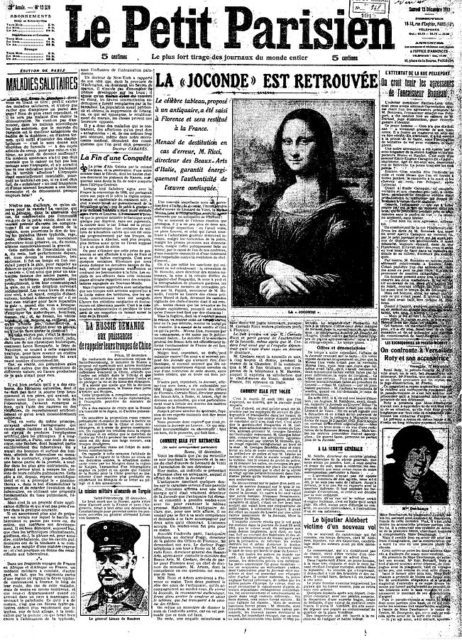
The subject of the painting is now believed to be Lisa Gherardini, an Italian noblewoman and wife of a Florentine cloth and silk merchant named Francesco Del Giocando who commissioned the portrait. The painting had been sold to the King of France and had even hung on the wall of Napoleon’s bedroom for a while before being returned to the Louvre.
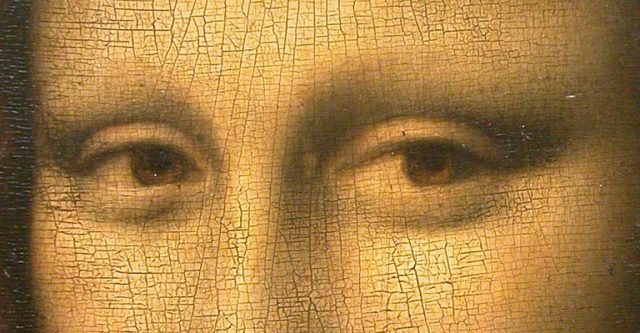
Peruggia was no doubt banking on the fact that all the fuss about the theft had died down and he was safely out of France. But he was wrong to imagine that it would now be safe to try to sell the painting. He took it to an art dealer who immediately became suspicious. He asked Peruggia to leave the painting so that he could look at it more closely.
The dealer may have recognized the painting or may simply have wondered how such a painting had fallen into Peruggia’s hands. He called in an expert in Italian painting who confirmed its provenance. The police were called, and Peruggia was arrested.
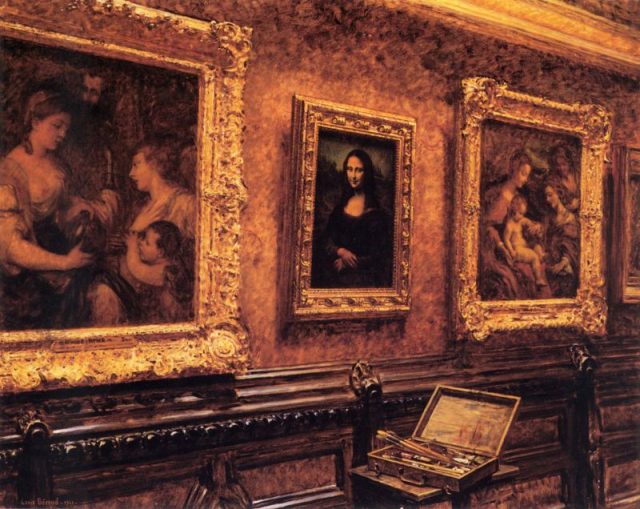
In his defense, Peruggia claimed that although he had stolen the painting he had acted out of patriotism. He wanted to bring the Mona Lisa home as he believed it had been stolen by Napoleon.
It is not known if that influenced the judge, but he was given a relatively lenient sentence of eight months in prison. And the Mona Lisa was returned to France to fill that empty space on the wall of the Louvre.
